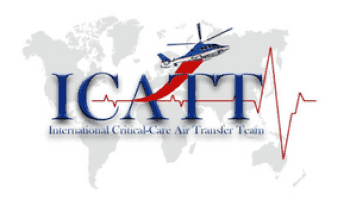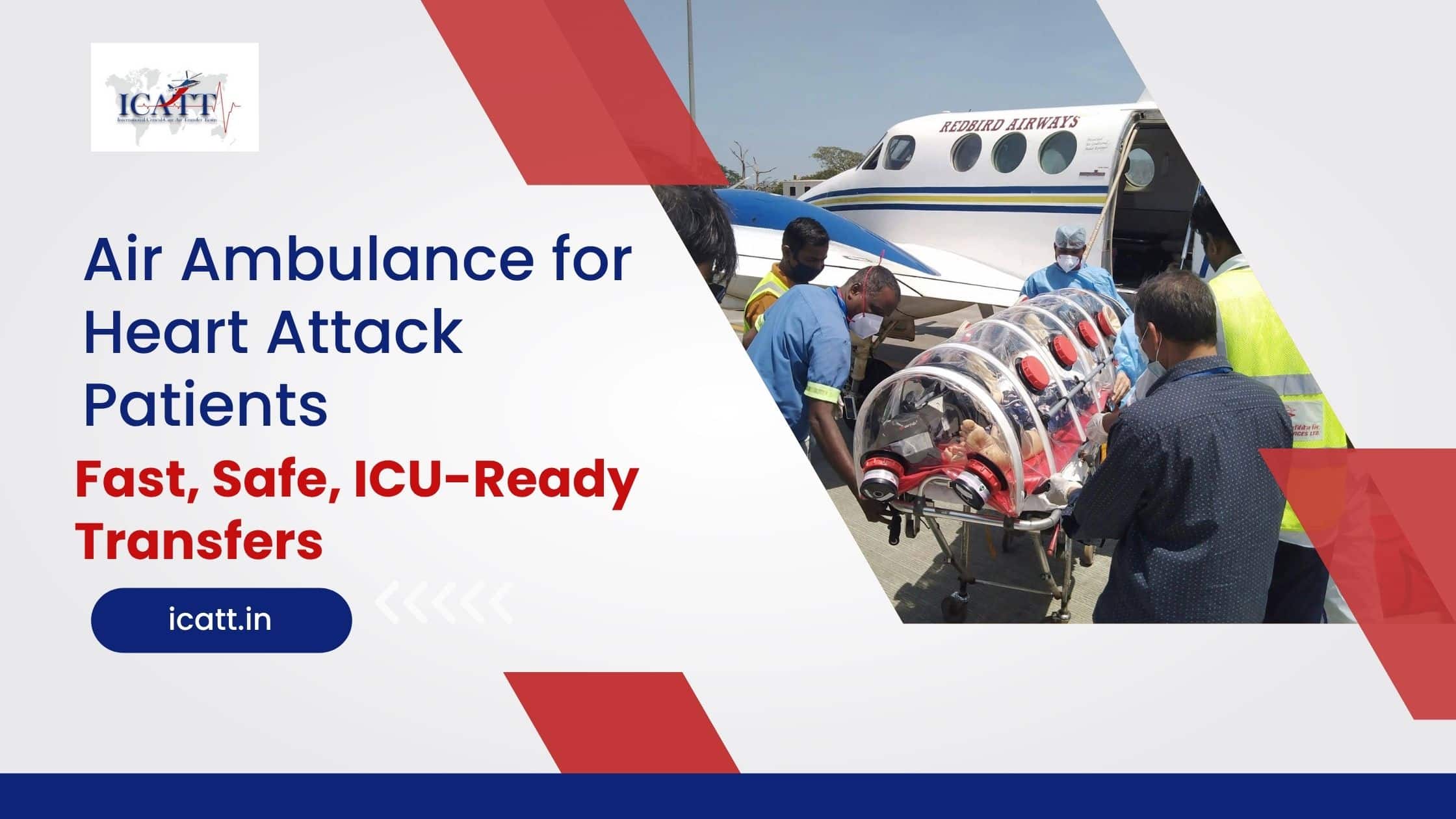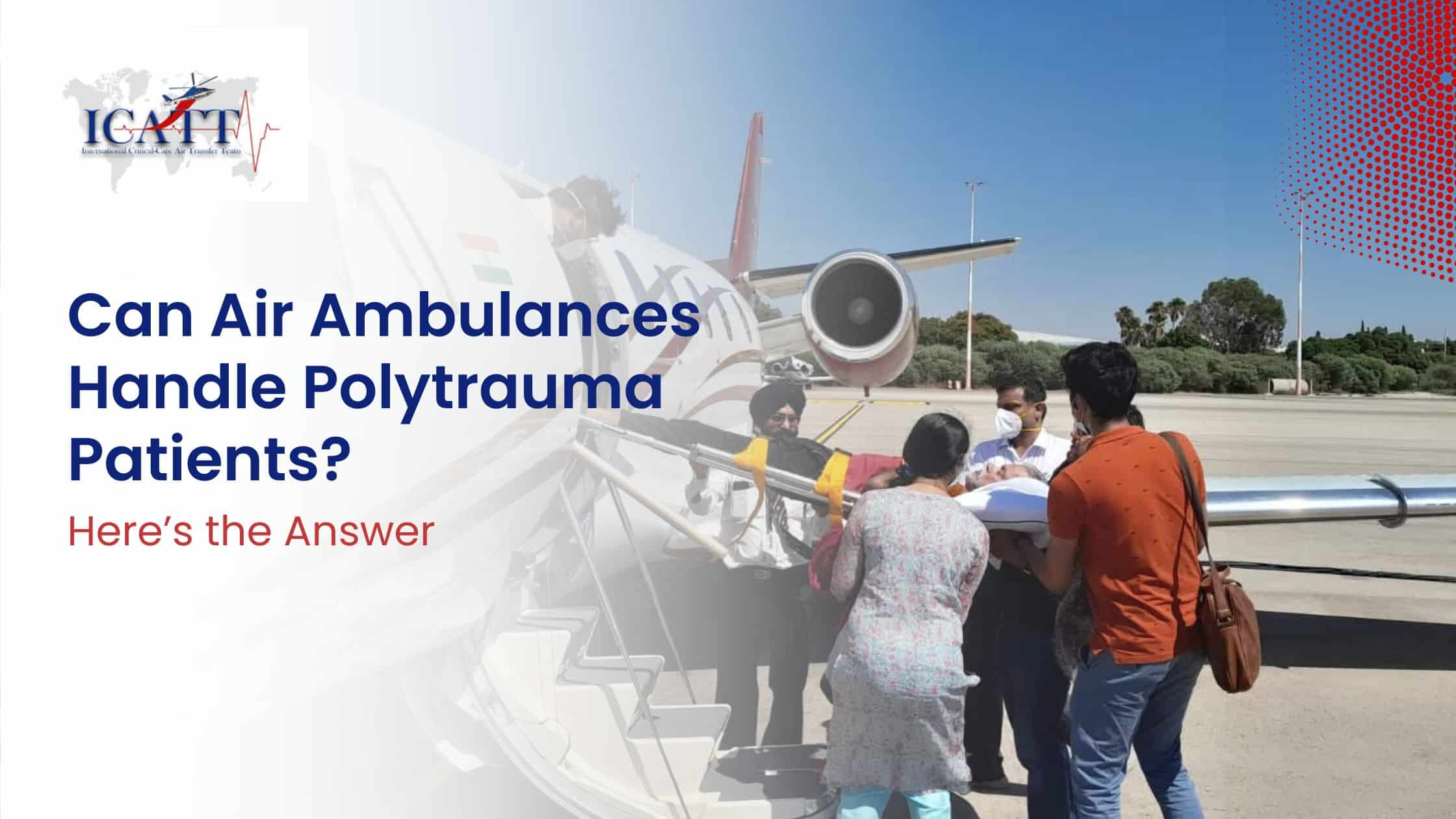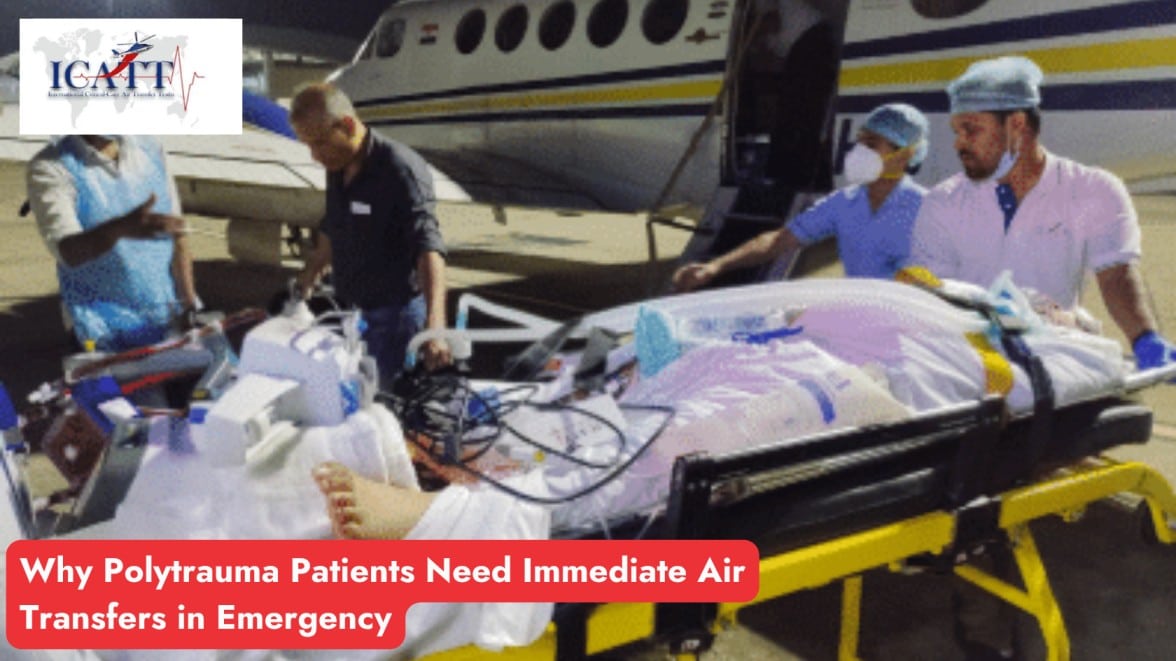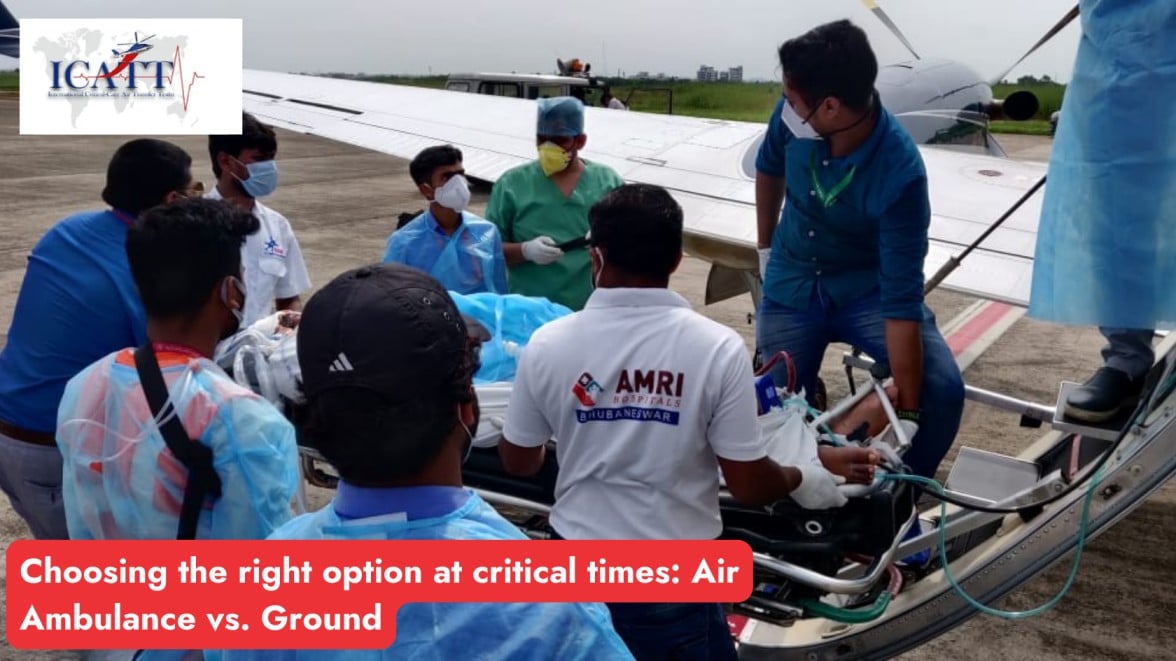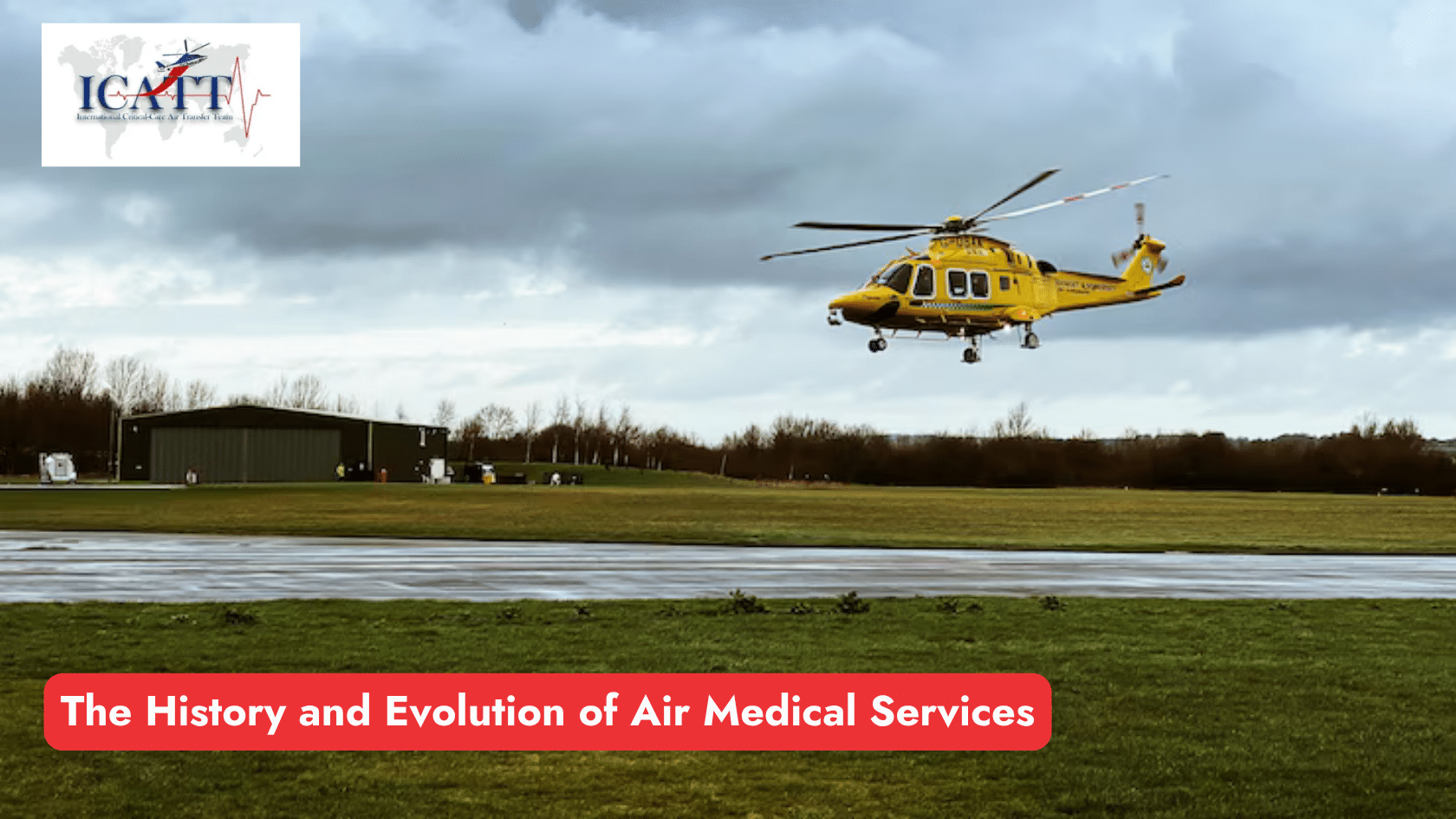In a world where borders blur in times of crisis, the role of international medical air transport has never been more critical. When faced with medical emergencies in remote locations or foreign lands, air ambulance services like those provided by ICATT (International Critical Air Transport Team) ensure that patients receive lifesaving care, regardless of geographic boundaries. However, delivering such care across borders involves navigating a labyrinth of logistical, regulatory, and operational challenges.
Let’s explore the intricate world of international medical air transport and the innovative solutions employed by providers like ICATT to overcome them.
The Critical Role of International Medical Air Transport
Medical emergencies can happen anywhere and at any time. Whether it’s a tourist suffering a stroke in a foreign country, an expatriate injured in an accident, or a local resident needing specialized treatment unavailable in their home country, timely access to advanced medical care can mean the difference between life and death. International medical air transport bridges this gap by providing swift, efficient, and specialized care.
Key Functions:
- Patient Transfer: Transporting patients from one country to another for advanced treatment or repatriation.
- Specialized Care in Transit: Offering ICU-level care aboard aircraft to stabilize critically ill patients during long flights.
- Disaster Response: Evacuating patients from disaster-stricken areas, including conflict zones, natural disasters, or pandemics.
The Complexities of Crossing Borders
Despite its critical importance, international medical air transport is far from straightforward. Each mission requires meticulous planning and coordination, with providers tackling challenges that range from regulatory hurdles to medical considerations.
1. Navigating Regulatory Frameworks
Each country has its own aviation, customs, and health regulations, which can complicate cross-border operations. Obtaining necessary permissions for airspace access, landing rights, and patient transfer often involves time-sensitive negotiations.
- Overflight and Landing Permits: Securing these permits can take hours or even days, particularly when dealing with countries that have complex bureaucratic processes.
- Immigration and Customs: Transporting patients, medical equipment, and medications across borders requires compliance with customs regulations, which can vary widely between countries.
- Healthcare Privacy Laws: Regulations like HIPAA (in the U.S.) and GDPR (in Europe) dictate how patient information is handled and shared during international missions.
2. Medical Challenges
Transporting critically ill patients across long distances poses significant medical risks. Altitude, pressure changes, and limited space onboard aircraft demand specialized equipment and expertise.
- Patient Stabilization: Ensuring the patient is stable enough for transport is a top priority. Conditions like severe trauma, cardiac issues, or respiratory distress require advanced medical interventions en route.
- In-Flight Medical Care: Aircraft must function as flying ICUs, equipped with ventilators, defibrillators, infusion pumps, and other critical tools.
- Altitude and Hypoxia: Reduced oxygen levels and pressure at high altitudes can exacerbate certain medical conditions, necessitating expert monitoring and intervention.
3. Operational and Logistical Challenges
Coordinating international air ambulance missions is a logistical feat, involving multiple stakeholders and tight timelines.
- Route Planning: Charting the fastest and safest flight path requires consideration of weather conditions, fuel stops, and geopolitical constraints.
- Crew Coordination: Pilots, medical teams, and ground staff must work seamlessly to ensure a smooth operation.
- Aircraft Selection: Choosing the right aircraft depends on the distance, patient condition, and onboard medical requirements.
4. Cultural and Linguistic Barriers
Operating across borders also involves navigating cultural differences and language barriers. Miscommunication during patient handovers or customs procedures can lead to delays or errors.
ICATT: Pioneering Solutions in International Medical Air Transport
In the realm of international medical air transport, ICATT (International Critical Air Transfer Team) stands out as a pioneer, delivering comprehensive and reliable solutions that prioritize patient safety and care.
Key Features of ICATT’s Services
- Highly Specialized Medical Team ICATT’s team comprises highly trained medical professionals, including specialists in critical care, emergency medicine, and ECMO (Extracorporeal Membrane Oxygenation). Our expertise enables us to handle a wide range of medical emergencies, from trauma and cardiac conditions to neonatal and pediatric transfers. The presence of experienced doctors and paramedics on every mission ensures ICU-level care in flight.
- State-of-the-Art Air Ambulances ICATT’s fleet of air ambulances is equipped with advanced medical technology, transforming them into flying intensive care units (ICUs). These aircraft include critical tools such as ventilators, cardiac monitors, infusion pumps, defibrillators, and neonatal incubators, ensuring that patients receive uninterrupted care during transit.
- Global Reach With a presence in over 50 countries, ICATT offers unparalleled global coverage for medical evacuations and patient repatriations. Our ability to navigate international regulations, secure permits, and coordinate logistics ensures timely and efficient transfers, no matter the destination.
- Comprehensive Services ICATT offers a broad spectrum of services to meet diverse medical needs:
- International Patient Transfers: Transporting patients across borders for specialized treatment.
- ECMO Transfers: Providing life-sustaining care for critically ill patients on ECMO during transit.
- Neonatal and Paediatric Transfers: Ensuring the safe transport of infants and children requiring specialized care.
- Trauma and High-Risk Obstetrics: Offering advanced care for emergency and high-risk scenarios.
- 24/7 Operations Center ICATT’s operations center works around the clock to coordinate each mission. From securing overflight and landing permissions to planning optimal routes, the team ensures seamless operations, reducing delays and complications. Their meticulous planning is a cornerstone of ICATT’s efficiency.
Innovations and Achievements
Our many achievements and innovative solutions underscore ICATT’s reputation as a trailblazer in air medical transport:
- Pioneering ECMO Transfers: ICATT has conducted groundbreaking ECMO transfers, including one from Doha to Chennai for a heart and lung transplant. This highlights their ability to manage highly complex medical conditions in transit.
- Disaster Response Expertise: ICATT has played a vital role in disaster response, providing Helicopter Emergency Medical Services (HEMS) during events such as the Kerala floods.
- Recognition for Innovation: ICATT has received accolades for our contributions to emergency medicine and aeromedical services, reflecting our leadership and dedication to advancing the field.
The Human Element: Compassion Beyond Borders
While technology and logistics are vital, the human element remains at the heart of international medical air transport. ICATT’s teams demonstrate unwavering dedication, compassion, and professionalism, often going above and beyond to save lives. Our ability to provide not only medical expertise but also emotional support to patients and families during challenging times is what truly sets us apart.
Conclusion
International medical air transport is a lifeline for patients in need, transcending borders to deliver critical care when and where it’s needed most. However, the complexities involved demand expertise, innovation, and an unyielding commitment to excellence.
As global connectivity increases and the demand for international medical air transport services grows, the importance of reliable air ambulance providers cannot be overstated. With our ability to navigate complexities and save lives across borders, we stand as a testament to humanity’s resilience and ingenuity in the face of adversity. Connect with us today!
